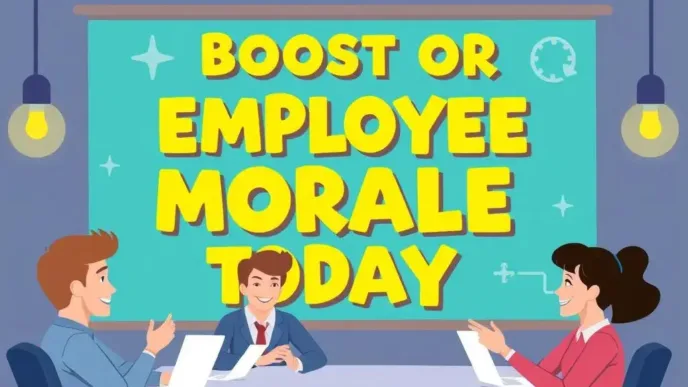Experience our comprehensive guide to small business employee benefits packages in 2025. Learn how to attract and retain top talent with tailored benefits, explore various types of perks, and discover strategies for effective implementation. Enhance employee satisfaction and foster a productive workplace today!
Small Business Employee Benefits Package: A Comprehensive Guide
In the competitive landscape of 2025, small businesses face the challenge of attracting and retaining top talent while operating with limited resources. A well-crafted employee benefits package is a powerful tool to differentiate your business, enhance employee satisfaction, and foster a productive workplace. This comprehensive guide explores what an employee benefits package entails, its importance for small businesses, the types of benefits available, strategies for designing an effective package, cost considerations, and real-world examples of small businesses excelling in this area. Whether you’re a small business owner or an HR professional, this article provides actionable insights to build a benefits package that works for your team and your budget.
Introduction to Employee Benefits Packages
An employee benefits package is a collection of non-wage compensations provided to employees in addition to their regular salary. These perks, ranging from health insurance to flexible work arrangements, are designed to improve employees’ well-being, financial security, and work-life balance. For small businesses, offering a thoughtful benefits package is not just a luxury but a strategic necessity. According to a 2025 survey by Paychex, 41% of business leaders plan to enhance their benefits packages, recognizing their critical role in employee retention and satisfaction (Paychex).
Benefits packages help small businesses compete with larger corporations, attract skilled workers, and reduce turnover, which can be costly. They also signal a commitment to employees’ long-term success, fostering loyalty and productivity. In an era where employees prioritize flexibility and well-being, a tailored benefits package can set your business apart.
Importance of Benefits for Small Businesses
Employee benefits are a key differentiator in the job market, offering several advantages:
- Talent Attraction and Retention: Competitive benefits make your business appealing to job seekers and encourage current employees to stay, reducing turnover costs.
- Employee Satisfaction and Productivity: Benefits like health insurance and paid time off improve morale, leading to higher engagement and output. Engaged teams can outperform others by over 20%, according to industry studies.
- Employer Branding: A strong benefits package enhances your reputation as an employee-focused company, drawing high-caliber candidates.
- Tax Advantages: Many benefits, such as retirement contributions, offer tax incentives, lowering your overall costs.
- Legal Compliance: Some benefits, like short-term disability in certain states, are mandatory, ensuring you meet regulatory requirements.
For small businesses, benefits are not just about compliance—they’re a strategic investment in building a resilient, motivated workforce.
Types of Employee Benefits
Small businesses can offer a variety of benefits to meet diverse employee needs. Below are the most common types, each with its unique value:
1. Health Insurance
Health insurance covers medical, dental, and vision expenses, providing employees with access to healthcare without financial strain. While costly, group plans or Health Savings Accounts (HSAs) can make it more affordable for small businesses (Paychex).
2. Retirement Plans
Retirement plans, such as 401(k)s or SIMPLE IRAs, help employees save for the future, often with employer contributions. These plans are easier to manage for small businesses and encourage long-term commitment.
3. Paid Time Off (PTO)
PTO includes vacation days, sick leave, and personal days, supporting work-life balance. Some businesses offer unlimited PTO, trusting employees to manage their time responsibly.
4. Flexible Work Arrangements
Flexible hours or remote work options are highly valued, especially by younger workers. These low-cost benefits enhance job satisfaction and attract talent seeking flexibility (OneDigital).
5. Professional Development
Offering training, workshops, or tuition reimbursement fosters employee growth. Small businesses can provide mentorship or access to online courses as budget-friendly options.
6. Wellness Programs
Wellness initiatives, such as gym memberships, mental health resources, or health screenings, promote a healthy workforce. A 2024 survey noted a 25% rise in businesses offering fitness stipends, reducing absenteeism (Metrobi).
7. Financial Wellness Programs
Benefits like student loan repayment assistance or financial counseling address economic concerns, particularly for younger employees (Paychex).
8. Other Perks
Creative perks, such as commuter benefits, childcare assistance, or company-sponsored events, add value without breaking the bank (Meditopia).
Emerging Trends in Employee Benefits for 2025
As employee expectations evolve, small businesses are adapting their benefits packages to stay competitive. Key trends for 2025 include:
- Financial Wellness: With economic uncertainty, benefits like retirement plans with company matches and debt repayment assistance are gaining traction. A 2025 Paychex survey found 49% of business leaders prioritizing increased pay and 41% focusing on enhanced benefits (Paychex).
- Mental Health Support: Over 60% of small businesses now offer mental health days or counseling services to address burnout, reflecting a growing emphasis on well-being (Metrobi).
- Flexible Work Arrangements: Flexible schedules and remote work options are critical, with 83% of Gen Z and 84% of Millennials valuing them for job satisfaction (OneDigital).
- Personalized Benefits: Customizable packages allow employees to choose perks like pet insurance or wellness stipends, catering to individual needs.
- Wellness Programs: Fitness memberships and comprehensive wellness initiatives are mainstream, reducing healthcare costs and boosting productivity (Metrobi).
These trends highlight the shift toward holistic, employee-centric benefits that prioritize financial security, mental health, and flexibility.
Designing an Effective Benefits Package
Crafting a benefits package that resonates with employees while staying within budget requires strategic planning. Here are key steps:
1. Assess Employee Needs
Conduct surveys or discussions to identify what benefits your employees value most. Younger workers may prioritize flexibility, while older employees might focus on retirement plans.
2. Consider Budget Constraints
Determine your budget and prioritize high-impact, low-cost benefits like flexible hours or wellness programs. Research suggests 41% of small business leaders are enhancing benefits despite budget challenges (Paychex).
3. Explore Cost-Effective Options
Join associations or use Professional Employer Organizations (PEOs) to access group rates for health insurance and other benefits, reducing costs (Paychex).
4. Ensure Legal Compliance
Be aware of mandatory benefits, such as short-term disability insurance in states like California or New York, to avoid penalties (Paychex).
5. Communicate Clearly
Provide clear information about benefits through guides or informational sessions to maximize their impact and ensure employees know how to use them (SHRM).
Implementing a Benefits Package: Tips for Small Businesses
To successfully roll out a benefits package, consider these practical tips:
- Start with Essentials: Offer core benefits like health insurance or retirement plans to meet basic employee expectations.
- Engage Employees: Use feedback to tailor benefits, ensuring they align with workforce priorities.
- Leverage Partnerships: Collaborate with local gyms or service providers for discounted rates on wellness benefits (Metrobi).
- Use Technology: Platforms like QuickBooks can streamline benefits administration, saving time and reducing errors (QuickBooks).
- Review Regularly: Assess your package annually to incorporate new trends and employee feedback, keeping it competitive.
Understanding the Costs
Offering benefits involves costs, but strategic choices can make them manageable. Health insurance and retirement plans are significant expenses, but group plans and tax incentives can reduce the burden. For example, small businesses in the U.S. may qualify for tax credits under the Affordable Care Act for providing health insurance. Low-cost benefits like flexible work arrangements or wellness stipends offer high value with minimal financial impact. Consulting with a financial advisor or HR specialist can help identify cost-effective solutions tailored to your business.
Case Studies: Small Businesses Leading the Way
Buffer
Buffer, a social media management platform, is renowned for its employee-centric benefits. Their package includes unlimited vacation, wellness grants, a four-day workweek during certain months, and transparent salary structures. These perks have led to high employee satisfaction and low turnover, proving that small businesses can compete with larger firms through innovative benefits (OneDigital).
Patagonia
Patagonia, an outdoor clothing company, aligns its benefits with its environmental mission. They offer on-site childcare, paid parental leave, and environmental internships, attracting employees who share their values. This approach has fostered a loyal workforce and enhanced Patagonia’s reputation as a top employer (Meditopia).
Basecamp
Basecamp, a project management software company, provides a four-day workweek in summer, paid sabbaticals, and a $5,000 annual vacation stipend. These benefits promote work-life balance and trust, contributing to a motivated team and strong company culture (Spill.chat).
Conclusion
A well-designed employee benefits package is a strategic asset for small businesses, enabling them to attract and retain talent, enhance employee satisfaction, and build a resilient workforce. By offering a mix of traditional benefits like health insurance and retirement plans, alongside innovative perks such as mental health support and flexible work arrangements, small businesses can create a compelling value proposition. Understanding employee needs, leveraging cost-effective options, and staying attuned to trends like financial wellness and personalization are key to success. As exemplified by companies like Buffer, Patagonia, and Basecamp, small businesses can implement creative benefits that drive engagement and loyalty, positioning them as competitive employers in 2025 and beyond.














Leave a Reply